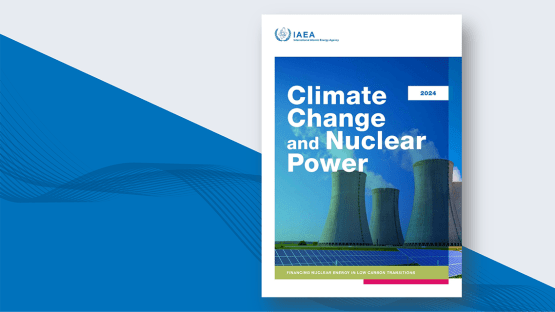The 2024 edition of the International Atomic Energy Agency’s (IAEA) Climate Change and Nuclear Power report was launched last week, underscoring the need for a significant increase in global investment to expand nuclear power and meet climate targets. The report was introduced during a side event on the margins of the 15th Clean Energy Ministerial (CEM) in Brazil.
With global attention increasingly turning toward nuclear power as a key component in decarbonizing economies and bolstering energy security, the IAEA projects a substantial rise in nuclear capacity by 2050. Under its high case scenario, nuclear capacity could increase 2.5 times from current levels by mid-century, playing a critical role in efforts to achieve net-zero emissions.
The report highlights that to meet this ambitious goal, global investment in nuclear energy must rise to $125 billion annually. This figure marks a sharp increase from the average $50 billion per year invested between 2017 and 2023. Achieving the more aspirational goal of tripling nuclear capacity—an objective supported by over 20 countries at COP28—would require even greater investment, estimated at $150 billion per year.
“Nuclear power plants are cost-competitive over their lifetimes, but the initial investment remains a challenge, particularly in market-driven economies and developing countries,” said IAEA Director General Rafael Mariano Grossi. He added that the IAEA is working to engage multilateral development banks to explore ways to improve financing options for developing countries looking to invest in nuclear energy.
The report also addresses the growing interest in unlocking private sector financing for nuclear projects, which is critical to meeting global energy goals. In a promising development, 14 major financial institutions, including several of the world’s largest banks, expressed interest in financing nuclear projects at a New York Climate Week event in September.
At the CEM side event, organized jointly by the IAEA and the CEM’s Nuclear Innovation: Clean Energy Future (NICE) initiative, key stakeholders discussed innovative strategies to attract public and private sector investments in nuclear power. “The CEM is bringing together key actors to find ways to make clean energy technologies—including nuclear—more affordable, attractive, and accessible to all,” said Jean-Francois Garnier, Head of the CEM Secretariat.
In Brazil, nuclear energy’s potential was emphasized by speakers such as Giovani Machado, an advisor to the President of Brazil’s Energy Research Office. Machado highlighted the role of IAEA modelling tools in informing Brazil’s energy policy, particularly regarding the Angra-3 nuclear power reactor.
Nuclear power’s inclusion in sustainable financing frameworks, such as the European Union’s taxonomy for sustainable activities, is beginning to yield results. In 2023, the first green bonds for nuclear power were issued in Finland and France. Electricité de France (EDF) has been awarded €4 billion in green bonds and €7 billion in green loans between 2022 and 2024, demonstrating how nuclear power is becoming a viable option within green financing mechanisms.
As the world looks ahead to COP29 in Baku, Azerbaijan, where the focus will shift to financing clean energy transitions, the IAEA report lays out a roadmap for accelerating the expansion of nuclear power. The report calls for policy reforms, international partnerships, and support for emerging technologies such as small modular reactors, alongside regulatory improvements and workforce development, to drive nuclear power’s role in global sustainability efforts.
Celso Cunha, President of the Brazilian Association for the Development of Nuclear Activities, summed up the multifaceted challenge: “Accelerating the energy transition process requires addressing nuclear power within the broader framework of clean energy plans.”
The IAEA’s report sets the stage for nuclear power to be a cornerstone of the global response to climate change, provided sufficient financial resources and policy support are mobilized to meet this critical goal.








